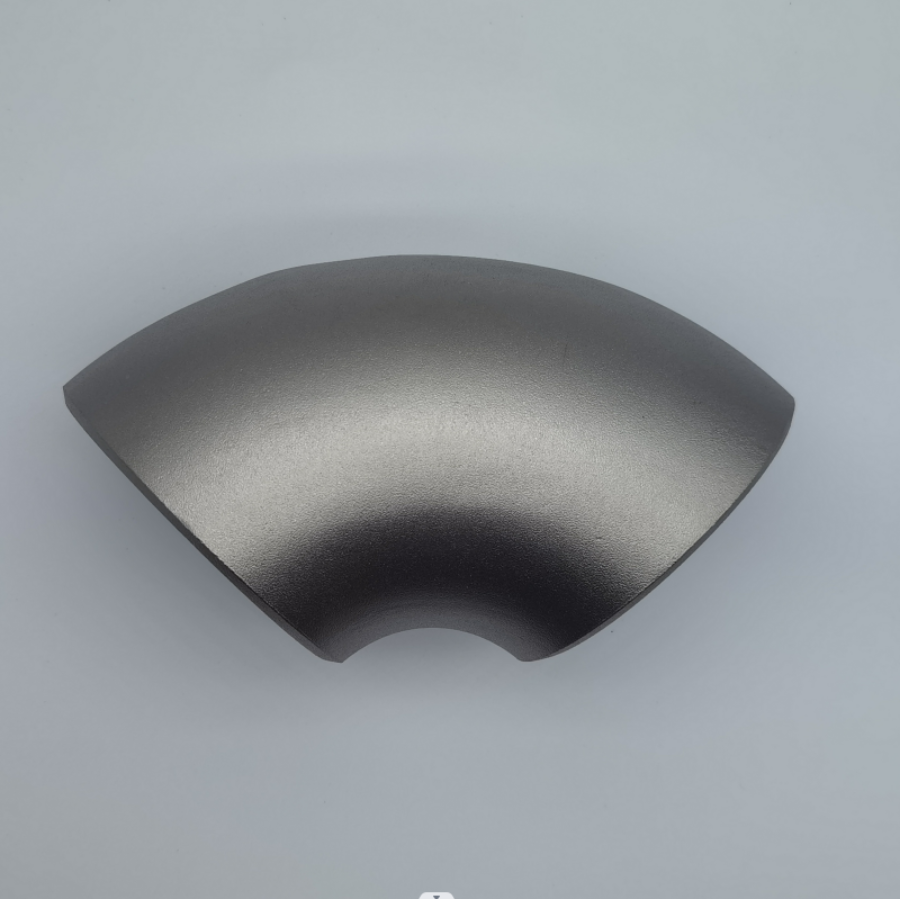Duplex steel pipe fittings material refers to stainless steel with ferrite and austenite each accounting for about 50%. Generally, the content of the smaller phase needs to be at least 30%. In the case of low C content, the Cr content is 18%~28% and the Ni content is 3%~10%. Some steels also contain alloying elements such as Mo, Cu, Nb, Ti, and N. Super duplex stainless steel type, containing high molybdenum and nitrogen, standard grade UNS S32750 (25Cr-7Ni-3.7Mo-0.3N), some also contain tungsten and copper, PREN value is greater than 40, suitable for harsh media conditions, with Good corrosion resistance and mechanical properties, comparable to super austenitic stainless steel.

The representative grade of duplex steel elbow is UNS S31803 (22Cr-5Ni-3Mo-0.15N), the PREN value is 32-33, and its corrosion resistance is between AISI 316L and 6%Mo+N austenitic stainless steel. After duplex stainless steel is subjected to normal solution treatment (heating at 1020°C to 1100°C and water cooling), the steel contains approximately 50% to 60% austenite and 50% to 40% ferrite. As the heating temperature increases, the proportion of the two phases does not change significantly. The continuous use temperature range of duplex stainless steel is -50~250℃. The lower limit depends on the brittle transition temperature of the steel. The upper limit is limited by the brittleness of 475℃. The upper limit temperature cannot exceed 300℃. Duplex stainless steel needs to be cooled quickly after solution treatment. Slow cooling will cause the precipitation of brittle phases, which will lead to a decrease in the toughness of the steel, especially the resistance to local corrosion. The lower limit temperature for hot processing and hot forming of high-chromium-molybdenum duplex stainless steel cannot be lower than 950°C, super-duplex stainless steel cannot be lower than 980°C, and low-chromium-molybdenum duplex stainless steel cannot be lower than 900°C to avoid the precipitation of brittle phases during processing. Surface cracks caused by the process cannot be treated with the commonly used stress relief treatment of 650-800°C for austenitic stainless steel, and solid solution annealing is generally used. When the overall stress relief treatment at 600-650℃ is required after overlaying duplex stainless steel on the surface of low alloy steel, the toughness and corrosion resistance caused by the precipitation of the brittle phase must be taken into consideration, especially the local corrosion resistance. To reduce the drop problem, shorten the heating time in this temperature range as much as possible. The heat treatment issues of low alloy steel and duplex stainless steel composite plates should also be considered.
Duplex steel elbow material:
ASTM/ASME SA789/790 UNS S31803, S32205, S32750, S32760.
ASTM A182 F51, F53, F55
ASTM A815 UNS S31803, S32205, S32750, S32760
Size range: outer diameter 21.3~1219MM, wall thickness: SCH 10S~SCH XXS
Author: Maria
Post time: Oct-20-2023
